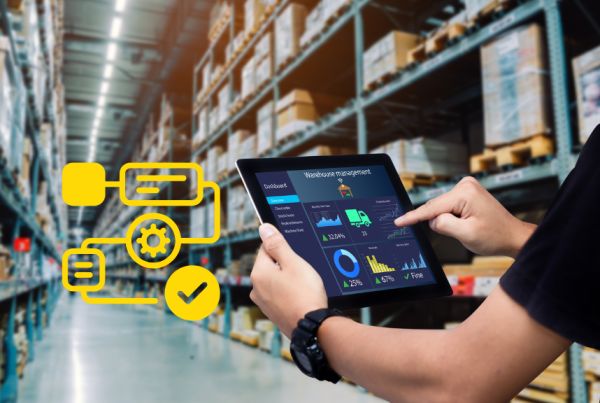The digital commerce universe is undergoing a fundamental shift. The headless commerce market is expected to reach $11.8 billion by 2028, growing at a compound annual growth rate of 17.5%, and small businesses are increasingly wondering whether they should join this revolution. But here’s the reality that many technology consultants won’t tell you: headless commerce isn’t for everyone. Understanding when this architecture makes sense for your business—and when it doesn’t—can save you thousands of dollars and months of development time.
Understanding Headless Commerce in Plain Terms
At its core, headless commerce separates your online store’s frontend (what customers see and interact with) from the backend (where your products, orders, and customer data live). Think of it like building with advanced LEGO blocks instead of a pre-molded toy. Traditional ecommerce platforms are like buying a complete dollhouse where changing the wall means renovating the entire structure. Headless commerce, on the other hand, lets you move the wall without touching the foundation.
This separation happens through APIs (Application Programming Interfaces), which act as messengers between your storefront and your business operations. When a customer clicks “add to cart” on your website, mobile app, or smart speaker, that API carries the message to your inventory system without the frontend needing to know how your backend actually processes the order.
By the end of 2025, organizations offering a unified commerce experience by frictionlessly moving customers through journeys will see at least a 20% uplift in total revenue. This statistic explains why businesses are paying attention, but the question remains: does this apply to your small business?
The Cost of Going Headless
Let’s address the elephant in the room: cost. Implementing a headless commerce setup requires a meaningful upfront investment to cover development, platform integration, and ongoing maintenance. Smaller businesses should plan for both initial build-out expenses and recurring monthly costs, which vary depending on their chosen technology stack and level of developer support.
The encouraging part is that many businesses see a relatively short payback period once the system is live. Improved conversion rates, lower operational overhead, and faster rollout of new sales channels often lead to a strong return on investment within the first year of adoption.
When Headless Commerce Makes Sense for Small Businesses
Not every small business needs headless commerce, but for those in the right position, it can be transformative. If your online revenue is under $500K or you don’t have dev support, headless may be overkill. However, if you’re experiencing rapid growth, selling across multiple channels, or constantly hitting platform limitations, headless architecture might be exactly what you need.
Consider a Miami-based fashion retailer selling through their website, Instagram Shop, TikTok, and a mobile app. With traditional commerce, they’d need to manage inventory and pricing separately for each channel, leading to overselling and customer frustration. A headless approach centralizes this management while allowing each channel to provide its optimal shopping experience. In South Florida’s competitive retail environment, where businesses often serve customers in English, Spanish, and Portuguese, the ability to quickly deploy multilingual storefronts becomes a significant competitive advantage.
Real-world fashion brand Kaporal saw a 60% drop in bounce rate and a 15% conversion rate boost with headless commerce. Luxury audio brand Devialet achieved a 100% conversion rate increase. While these results aren’t guaranteed, they demonstrate the potential impact when headless commerce aligns with business needs.
The decision often comes down to specific pain points. If your development team constantly waits weeks for simple frontend changes, if you’re losing sales because your site crashes during peak traffic, or if you can’t integrate the modern tools your competitors use, headless commerce addresses these challenges directly. Companies with a headless commerce architecture report that they can expand into new channels at a faster rate, which becomes crucial when new social commerce opportunities emerge monthly.
When to Stick with Traditional Commerce
Sometimes the smartest technology decision is choosing not to adopt new technology. Traditional commerce platforms remain the better choice for many small businesses, particularly those focused on local markets with straightforward online selling needs. If you’re a Miami restaurant offering online ordering, a boutique law firm selling consultation packages, or a local service provider with a simple booking system, the complexity of headless commerce likely outweighs its benefits.
Traditional platforms like WooCommerce, standard Shopify, or BigCommerce’s traditional offering provide everything most small businesses need at a fraction of the cost. These platforms offer tested templates, built-in features, and extensive app marketplaces that solve common business problems without custom development. They also require minimal technical expertise, allowing business owners to make updates themselves rather than calling a developer for every change.
The simplicity extends to maintenance and troubleshooting. When something goes wrong with a traditional platform, you have one vendor to contact. With headless commerce, you might be coordinating between your CMS provider, commerce platform, hosting service, and custom development team to identify and fix issues. For businesses without dedicated technical staff, this complexity can become overwhelming and expensive.
Implementation Strategies That Reduce Risk
If you’ve determined that headless commerce aligns with your business goals, your headless commerce implementation doesn’t have to be all-or-nothing. You can wade into the waters of a headless website using a phased approach. This strategy minimizes risk while allowing your team to adjust gradually.
The frontend-first approach has emerged as a particularly effective strategy for small businesses. Instead of completely rebuilding your commerce infrastructure, you keep your existing backend (like Shopify or BigCommerce) and only replace the frontend with a headless solution. This approach typically costs 40-60% less than a full headless implementation while delivering many of the same benefits, including improved site speed and design flexibility.
Start by identifying your highest-impact area. Perhaps your product pages convert poorly on mobile devices, accounting for 70% of your traffic but only 30% of sales. Building a headless frontend just for mobile users while keeping desktop visitors on your traditional platform lets you test the waters without betting the entire business. This staged approach allows businesses to gradually implement headless architecture, making it more accessible and cost-effective.
Another practical approach involves starting with a single new channel. If you’re planning to launch a mobile app or enter a new marketplace, build that experience using headless architecture while maintaining your existing website. This provides real-world experience with headless commerce without disrupting your current operations.
Measuring Success and ROI
Before investing in headless commerce, establish clear metrics for success. Conversion rate improvements typically range from 15% to 50%, but your results depend on your starting point and implementation quality. If your current site already performs well, expect smaller gains. If you’re struggling with slow load times and limited functionality, the impact could be dramatic.
Google research shows that 53% of mobile users abandon sites that take longer than 3 seconds to load. Headless architecture often reduces load times by 20-40%, directly impacting conversion rates. For a business doing $1 million in annual online revenue with a 2% conversion rate, improving to 2.3% through faster load times generates an additional $150,000 annually—enough to justify the headless investment.
Beyond conversion rates, measure operational efficiency. Track how long it takes to launch new features, update content, or expand to new channels. Many businesses find that tasks requiring weeks with traditional platforms take days with headless architecture. This acceleration particularly benefits small businesses competing against larger rivals with bigger development teams.
Customer lifetime value often increases with headless commerce due to improved personalization capabilities. When you can deliver targeted experiences based on customer behavior, purchase history, and preferences across all touchpoints, customers buy more frequently and remain loyal longer.
Taking the Next Step
The transition to headless commerce represents a significant decision for any small business. Success requires careful planning, realistic budgeting, and often, experienced guidance to avoid common pitfalls.
For small businesses ready to explore headless commerce, the journey begins with an honest assessment of your current challenges, future goals, and available resources. Document your pain points with specific examples and metrics. Calculate the cost of staying with your current platform, including lost sales from poor performance, delayed feature launches, and inability to sell through emerging channels. Compare this against the investment required for headless commerce, remembering to factor in the efficiency gains and new revenue opportunities it enables.
The complexity of headless commerce makes expert guidance valuable. At Simple Solutions FS, we specialize in helping South Florida small businesses navigate these technical decisions without the enterprise consulting price tag. We’ll analyze your specific situation, identify whether headless commerce aligns with your goals, and if it does, create a phased implementation plan that minimizes risk while maximizing return on investment.
Whether you ultimately choose headless commerce or optimize your traditional platform, the key is making an informed decision based on your unique business needs rather than following trends. Technology should serve your business goals, not the other way around. If you’re ready to explore whether headless commerce makes sense for your business, let’s start with a conversation about where you are today and where you want to be tomorrow.




